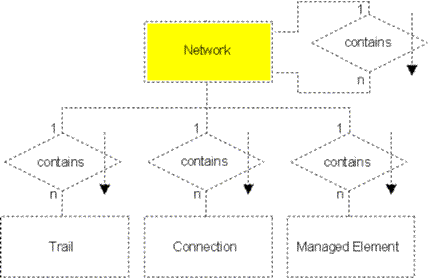
Figure 1 - Network Fragment
M.3100 Fragments
Network Fragment

The Network Fragment defines the relationship between a managed network and its related trails, connections, and managed elements. In this case, a network fragment is shown to contain all elements.
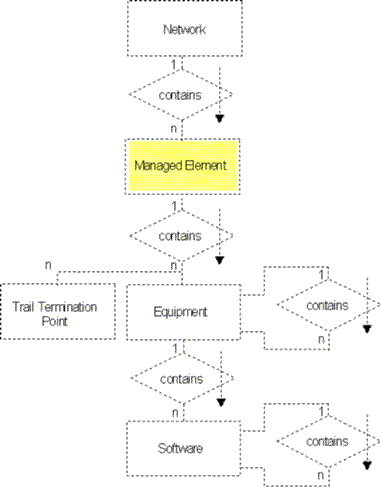
The Managed Element Fragment defines the components and relationships contained in a single managed element. In this case, a managed element is shown to contain equipment (including software), along with trail termination points
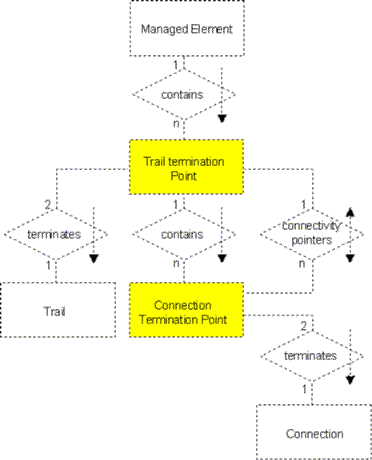
The Termination Point Fragment contains the types of terminations that a single piece of managed equipment may contain. Both trail and connection termination points are included in this fragment.
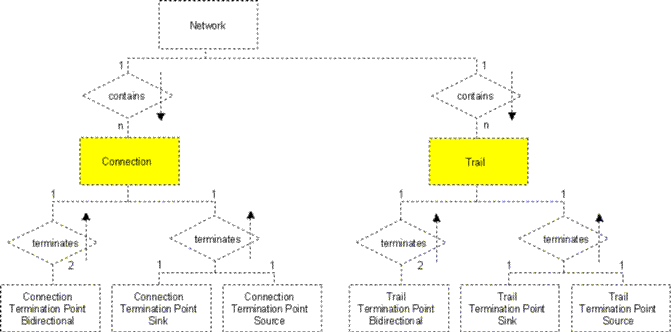
The Transmission Fragment provides a different, non-equipment oriented view of communications through a network. Two forms of transmission entities are defined, trails and connections. The relationships between these entities and references to their relative termination points are included in this fragment.
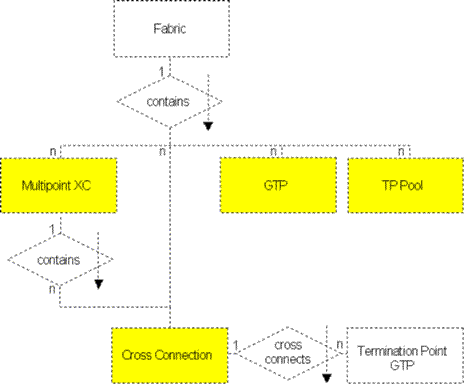
The Cross Connection Fragment helps in managing cross connect fabric topologies. The cross connection fragment contains multipoint cross connections, cross connections, generic termination points, and a pool of termination points.
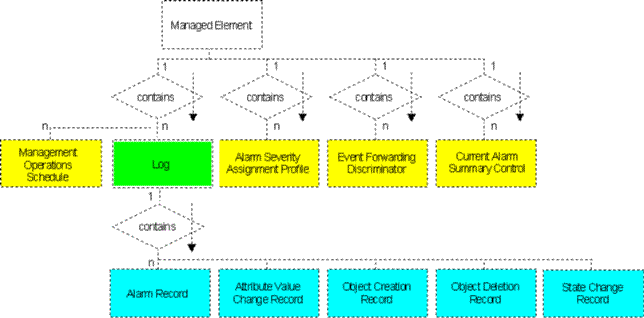
The Functional Area Fragment defines the classes of objects contained within a managed element to provide additional management services. Object classes contained in the functional area fragment include: Management Operations Schedule, Logs (e.g., alarms, attribute value changes, object creation and deletion records, state change records), alarm assignment profiles, event forwarding discriminators and the current alarm summary control.